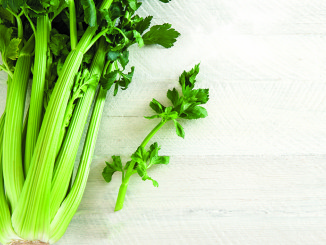
For cooking quick and easy meals that are as healthful as they are delicious, put a wok at the top of your kitchen essentials list.
Thought to have originated in China around the Han dynasty, starting in 206 B.C., the ancient wok was made of cast iron and had a round bottom and a short looped handle on each side. So beloved by the Chinese, woks often were placed in tombs alongside their deceased owners.
Although cast-iron woks remain popular today, other options include stainless steel (with or without a nonstick or ceramic coating), aluminum, copper and carbon steel. Electric woks also are available for tableside cooking, but expect to pay a hefty price for this convenience.
Carbon steel woks are preferred by many chefs and home cooks, not only because they heat quickly and evenly, but also because they are extremely durable, lighter than cast-iron versions and, when well-seasoned, practically nonstick. As a bonus, carbon steel woks are relatively inexpensive and can be purchased for about $30.
Choose a traditional round-bottom, short-handled wok or opt for the design many chefs prefer: a flat-bottomed wok with one short looped handle and one long, straight handle. This design allows cooks to easily lift the wok and flip food in the air. A lid may come in handy, especially for steaming, braising and smoking foods.
High, sloping sides of a wok set it apart from a regular sauté or frying pan. Pick a wok with a 4- to 5-inch flat bottom and a 12- to 14-inch diameter. This size is ideal for cooking a lot of food without overcrowding the pan and keeping food warm around the sides without overcooking.
Prepare a simple stir-fry in a wok with a light splash of heart-healthy oil, fresh or frozen vegetables and flavorful aromatics such as onion, garlic and peppers. Or use this versatile kitchen tool to steam, boil, pan-fry, braise, poach or smoke foods.
Follow the manufacturer’s instructions to care for a wok. If you choose a carbon steel version, treat it with TLC and it will perform better with each use. New carbon steel woks typically have a protective oil coating that should be removed with hot, soapy water before using. After washing, dry the wok on a stove burner over high heat, then carefully rub it down with an oiled paper towel.
After each use, soak the wok in hot water, then wash it with a soft sponge or brush, avoiding rough scrubbing unless necessary. Soap is not needed but likely will not harm the wok. With proper care, your wok will develop a gorgeous patina, allowing for many years of healthful, flavorful cooking.





